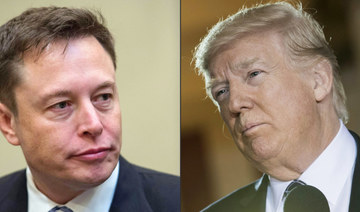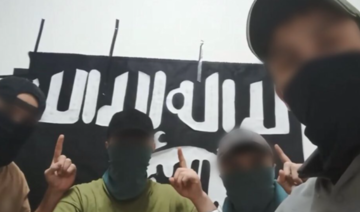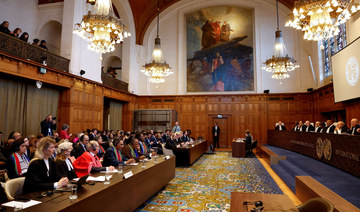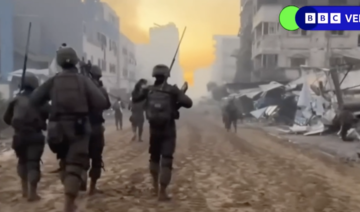WASHINGTON: The House Jan. 6 committee’s final report asserts that Donald Trump criminally engaged in a “multi-part conspiracy” to overturn the lawful results of the 2020 presidential election and failed to act to stop his supporters from attacking the Capitol, concluding an extraordinary 18-month investigation into the former president and the violent insurrection two years ago.
The 814-page report released Thursday comes after the panel interviewed more than 1,000 witnesses, held 10 hearings and obtained millions of pages of documents. The witnesses — ranging from many of Trump’s closest aides to law enforcement to some of the rioters themselves — detailed Trump’s actions in the weeks ahead of the insurrection and how his wide-ranging pressure campaign to overturn his defeat directly influenced those who brutally pushed past the police and smashed through the windows and doors of the Capitol on Jan. 6, 2021.
The central cause was “one man,” the report says: Trump.
The insurrection gravely threatened democracy and “put the lives of American lawmakers at risk,” the nine-member panel concluded.
In a foreword to the report, outgoing Speaker Nancy Pelosi says the findings should be a “clarion call to all Americans: to vigilantly guard our Democracy and to give our vote only to those dutiful in their defense of our Constitution.”
The report’s eight chapters of findings tell the story largely as the panel’s hearings did this summer — describing the many facets of the remarkable plan that Trump and his advisers devised to try and void President Joe Biden’s victory. The lawmakers describe his pressure on states, federal officials, lawmakers and Vice President Mike Pence to game the system or break the law.
In the two months between the election and the insurrection, the report says, “President Trump or his inner circle engaged in at least 200 apparent acts of public or private outreach, pressure, or condemnation, targeting either State legislators or State or local election administrators, to overturn State election results.”
Trump’s repeated, false claims of widespread voter fraud resonated with his supporters, the committee said, and were amplified on social media, building on the distrust of government he had fostered for his four years in office. And he did little to stop them when they resorted to violence and stormed the Capitol.
The massive, damning report comes as Trump is running again for the presidency and also facing multiple federal investigations, including probes of his role in the insurrection and the presence of classified documents at his Florida estate. This week is particularly fraught for him, as a House committee is expected to release his tax returns after he has fought for years to keep them private. And Trump has been blamed by Republicans for a worse-than-expected showing in the midterm elections, leaving him in his most politically vulnerable state since he won the 2016 election.
Posting on his social media site, Trump called the report “highly partisan” and falsely claimed it didn’t include his statement on Jan. 6 that his supporters should protest “peacefully and patriotically.” The committee noted he followed that comment with election falsehoods and charged language exhorting the crowd to “fight like hell.”
The report details a multitude of failings by law enforcement and intelligence agencies. But it makes an emphatic point that security failures are not what led to the insurrection.
“The President of the United States inciting a mob to march on the Capitol and impede the work of Congress is not a scenario our intelligence and law enforcement communities envisioned for this country,” the committee’s chairman, Mississippi Rep. Bennie Thompson, writes in a separate foreword.
The report details Trump’s inaction as his loyalists were violently storming the building. Returning to the White House from his fiery speech, he asked an employee if they had seen his remarks on television.
“Sir, they cut it off because they’re rioting down at the Capitol,” the staffer said, according to the report.
A White House photographer snapped a picture of Trump at 1:21 p.m., learning of the riot from the employee. “By that time, if not sooner, he had been made aware of the violent riot at the Capitol,” the report states.
In total, 187 minutes elapsed between the time Trump finished his speech at the Ellipse and his first effort to get the rioters to disperse, through an eventual video message in which he asked his supporters to go home even as he reassured them, “We love you, you’re very special.”
During those hours, dozens of staffers and associates pleaded with him to make a forceful statement. But he did not.
The committee quotes some of Trump’s most loyal supporters blaming him for the violence.
“We all look like domestic terrorists now,” longtime aide Hope Hicks texted Julie Radford, who served as Ivanka Trump’s chief of staff, in the aftermath.
Hicks also texted a White House lawyer: “I’m so upset. Everything we worked for wiped away.”
The investigation’s release is a final act for House Democrats who are ceding power to Republicans in less than two weeks, and have spent much of their four years in power investigating Trump. Democrats impeached Trump twice, the second time a week after the insurrection. He was acquitted by the Senate both times. Other Democratic-led probes investigated his finances, his businesses, his foreign ties and his family.
On Monday, the panel of seven Democrats and two Republicans officially passed their investigation to the Justice Department, recommending the department investigate the former president on four crimes, including aiding an insurrection. While the criminal referrals have no legal standing, they are a final statement from the committee after its extensive, year-and-a-half-long probe.
Trump has tried to discredit the report, slamming members of the committee as “thugs and scoundrels” as he has continued to falsely dispute his 2020 loss.
In response to the panel’s criminal referrals, Trump said: “These folks don’t get it that when they come after me, people who love freedom rally around me. It strengthens me.”
The committee has also begun to release hundreds of transcripts of its interviews. On Thursday, the panel released transcripts of two closed-door interviews with former White House aide Cassidy Hutchinson, who testified in person at one of the televised hearings over the summer and described in vivid detail Trump’s efforts to influence the election results and indifference toward the violence as it occurred.
In the two interviews, both conducted after her July appearance at the hearing, she described how many of Trump’s allies, including her lawyer, pressured her not to say too much in her committee interviews.
Jan. 6 panel unveils report, describes Trump ‘conspiracy’
https://arab.news/jvnp9
Jan. 6 panel unveils report, describes Trump ‘conspiracy’
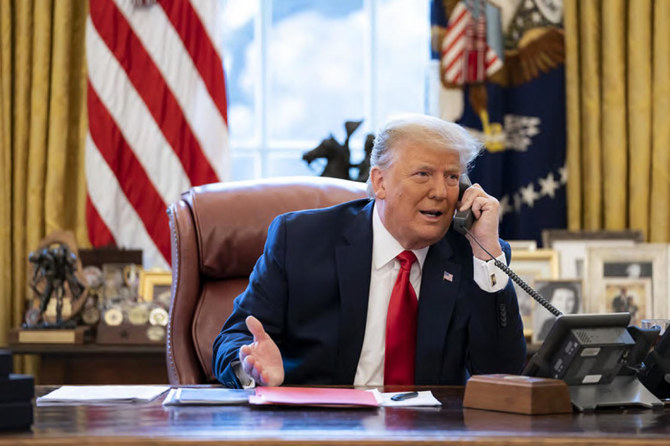
- Witnesses detailed Trump’s actions in the weeks ahead of the insurrection
France charges Daesh official’s ex-wife with crimes against humanity
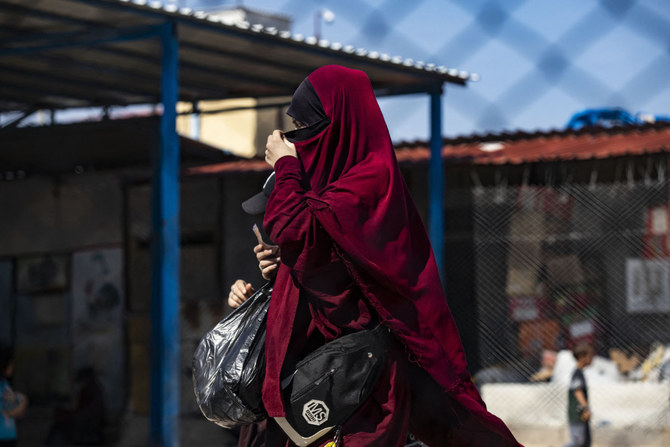
- The woman identified only as Sonia M. was accused by a Yazidi woman of raping her twice and knowing that her husband was raping her, Le Parisien reported
- The Yazidi woman was 16 when she was taken captive by Daesh militants and forced into slavery by top Daesh official Abdelnasser Benyoucef
PARIS: France has charged the ex-wife of a top Daesh official with crimes against humanity on suspicion of enslaving a teenage Yazidi girl in Syria, French media reported.
A woman identified as Sonia M., the former wife of the jihadist group’s head of external operations Abdelnasser Benyoucef, was charged on March 14, Le Parisien said Saturday.
The Yazidi woman, who was 16 when she was forced into slavery by Benyoucef, accused Sonia M. of raping her twice and knowing that her husband was raping her, the report said.
The woman, now 25, said she was held for more than a month in 2015 in Syria, where she was not allowed to eat, drink or shower without Sonia M.’s permission.
Sonia M. denied the allegations against her in a March 14 interview with French investigators, saying “only one rape” had been committed by her former husband.
The teenager “left her room freely, ate what she wanted, went to the toilet when she needed to,” she said in her interview, seen by AFP.
Sonia M.’s lawyer Nabil Boudi slammed the charges as “opportunistic accusations,” saying that prosecutors were seeking “to make her responsible for the most serious crimes, because the courts have not managed to apprehend the real perpetrators.”
An arrest warrant has been issued for Benyoucef, according to a source close to the investigation.
France launched an investigation in 2016 into genocide, crimes against humanity and war crimes committed against ethnic and religious minorities in Iraq and Syria since 2012.
The probe has focused on crimes suffered by members of the Yazidi and Christian communities as well as members of the Sheitat tribe, according to France’s PNAT anti-terror unit.
“The aim is to document these crimes and identify the French perpetrators who belong to the Islamic State organization,” PNAT told AFP.
US announces $6 billion in security aid for Ukraine
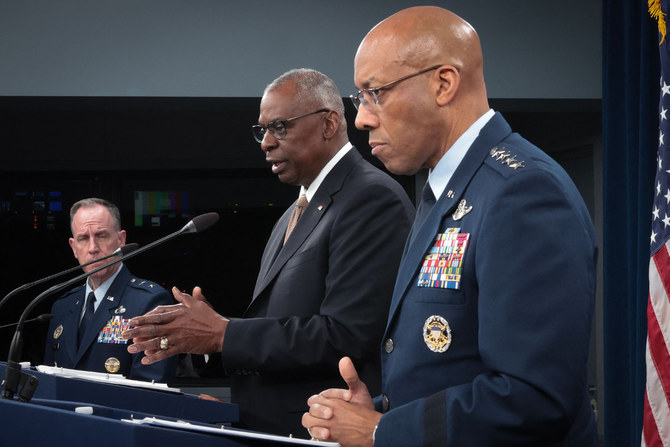
- The package is the second this week, following another valued at $1 billion
- Ukraine’s President Volodymyr Zelensky said the US delay in approving new assistance has been costly for Kyiv
WASHINGTON: Defense Secretary Lloyd Austin on Friday announced the United States will provide key air defense munitions and artillery rounds to Ukraine as part of a $6 billion military aid package that is its largest ever for Kyiv.
The package is the second this week, following another valued at $1 billion that was announced just after US President Joe Biden signed a much-delayed bill to provide new funding for Ukraine as it struggles to hold back Russian advances.
“This is the largest security assistance package that we’ve committed to date,” Austin told journalists following the conclusion of a virtual meeting of dozens of Kyiv’s international supporters.
“They need air defense interceptors, they need artillery systems and munitions. They need... armored vehicles, they need maintenance and sustainment. So all of those kinds of things are included” in the package,” he said.
Ukraine has in recent months pleaded for more air defenses from its Western allies as it struggles to fend off a surge in deadly attacks on civilian infrastructure, and the new package includes interceptors for both Patriot and NASAMS air defense systems.
But unlike the $1 billion package announced Wednesday, which featured items that will be drawn from US stocks, the latest assistance will be procured from the defense industry, meaning it will take longer to arrive on the battlefield.
Speaking at the opening of the virtual meeting, Ukraine’s President Volodymyr Zelensky said the US delay in approving new assistance has been costly for Kyiv.
“While we were waiting for a decision on the American support, the Russian army managed to seize the initiative on the battlefield,” Zelensky said.
“We can still now not only stabilize the front, but also move forward, achieving our Ukrainian goals in the war,” he said, while noting that “Ukrainian defenders need your sufficient and timely support.”
A senior US defense official said this week that “Ukrainian forces have been rationing their ammunition for quite some time, rationing their capabilities.”
Aid from the United States and other countries “will enable the Ukrainians to begin to retake the initiative,” but “this will not be a rapid process,” the official said on condition of anonymity.
“The Ukrainians will need to rebuild quite a bit to take on board all of these new supplies... and ensure that they can defend their positions. So I would not forecast any large-scale offensive in the near-term,” the official added.
The United States has been a key military backer of Ukraine, committing tens of billions of dollars in security assistance since Russia launched its full-scale invasion in February 2022.
But prior to this week, Washington had announced new aid for Ukraine on just one other occasion this year, a $300 million package in March that was only made possible by using money that the Pentagon had saved on other purchases.
A squabbling Congress had not approved large-scale funding for Kyiv for nearly a year and a half, but eventually took action starting last week after months of acrimonious debate among lawmakers over how or even whether to help Ukraine defend itself.
The US House of Representatives on April 20 approved legislation authorizing $95 billion in aid funding, including $61 billion for Ukraine, while the Senate passed the measure on Tuesday and Biden signed it into law the following day.
It’s 30 years since apartheid ended. South Africa’s celebrations are set against growing discontent
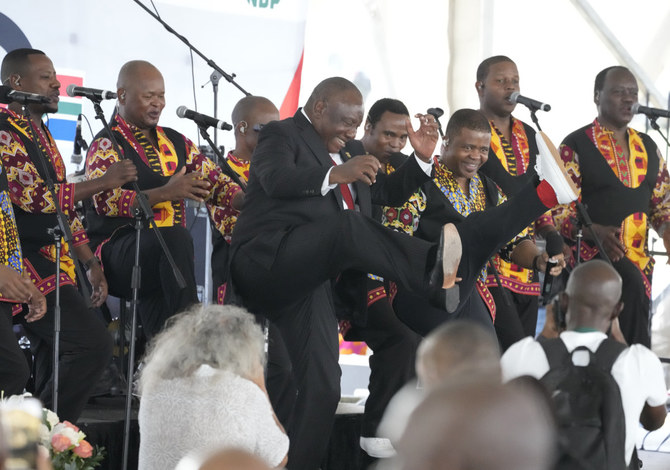
- South Africa is still the most unequal country in the world in terms of wealth distribution, according to the World Bank, with race a key factor
- While the damage of apartheid remains difficult to undo, the ANC is increasingly being blamed for South Africa’s current problems
PRETORIA: South Africa marked 30 years since the end of apartheid and the birth of its democracy with a ceremony in the capital Saturday that included a 21-gun salute and the waving of the nation’s multicolored flag.
But any sense of celebration on the momentous anniversary was set against a growing discontent with the current government.
President Cyril Ramaphosa presided over the gathering in a huge white tent in the gardens of the government buildings in Pretoria as head of state.
He also spoke as the leader of the African National Congress party, which was widely credited with liberating South Africa’s Black majority from the racist system of oppression that made the country a pariah for nearly a half-century.
The ANC has been in power ever since the first democratic, all-race election of April 27, 1994, the vote that officially ended apartheid.
But this Freedom Day holiday marking that day fell amid a poignant backdrop: Analysts and polls predict that the waning popularity of the party once led by Nelson Mandela is likely to see it lose its parliamentary majority for the first time as a new generation of South Africans make their voices heard in what might be the most important election since 1994 next month.

“Few days in the life of our nation can compare to that day, when freedom was born,” Ramaphosa said in a speech centered on the nostalgia of 1994, when Black people were allowed to vote for the first time, the once-banned ANC swept to power, and Mandela became the country’s first Black president. “South Africa changed forever. It signaled a new chapter in the history of our nation, a moment that resonated across Africa and across the world.”
“On that day, the dignity of all the people of South Africa was restored,” Ramaphosa said.
The president, who stood in front of a banner emblazoned with the word “Freedom,” also recognized the major problems South Africa still has three decades later with vast poverty and inequality, issues that will be central yet again when millions vote on May 29. Ramaphosa conceded there had been “setbacks.”
The 1994 election changed South Africa from a country where Black and other nonwhite people were denied most basic freedoms, not just the right to vote. Laws controlled where they lived, where they were allowed to go on any given day, and what jobs they could have. After apartheid fell, a constitution was adopted guaranteeing the rights of all South Africans no matter their race, religion, gender or sexuality.
But that hasn’t significantly improved the lives of millions, with South Africa’s Black majority that make up more than 80 percent of the population of 62 million still overwhelmingly affected by severe poverty.
The official unemployment rate is 32 percent, the highest in the world, and more than 60 percent for young people between the ages of 15 and 24. More than 16 million South Africans — 25 percent of the country — rely on monthly welfare grants for survival.
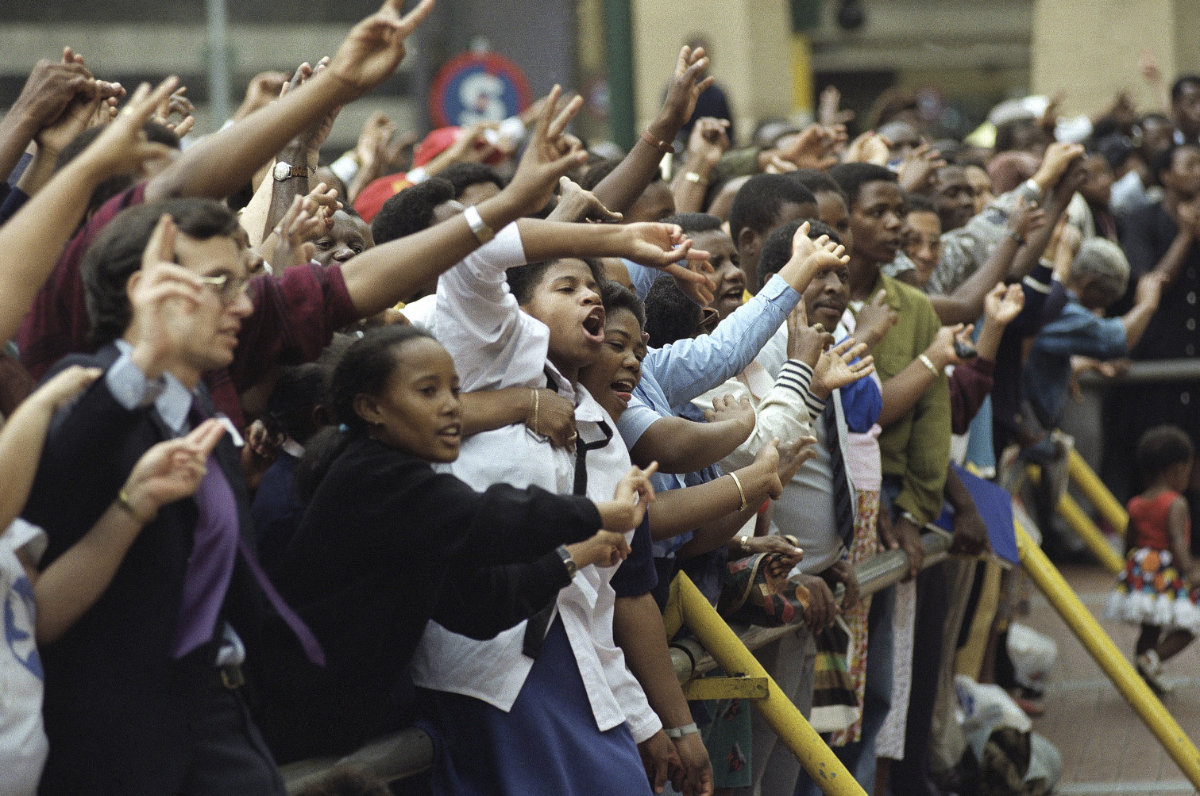
South Africa is still the most unequal country in the world in terms of wealth distribution, according to the World Bank, with race a key factor.
While the damage of apartheid remains difficult to undo, the ANC is increasingly being blamed for South Africa’s current problems.
In the week leading up to the anniversary, countless South Africans were asked what 30 years of freedom from apartheid meant to them. The dominant response was that while 1994 was a landmark moment, it’s now overshadowed by the joblessness, violent crime, corruption and near-collapse of basic services like electricity and water that plagues South Africa in 2024.
It’s also poignant that many South Africans who never experienced apartheid and are referred to as “Born Frees” are now old enough to vote.
Outside the tent where Ramaphosa spoke in front of mostly dignitaries and politicians, a group of young Black South Africans born after 1994 and who support a new political party called Rise Mzansi wore T-shirts with the words “2024 is our 1994” on them. Their message was that they were looking beyond the ANC and for another change for their future in next month’s election.
“They don’t know what happened before 1994. They don’t know,” said Seth Mazibuko, an older supporter of Rise Mzansi and a well-known anti-apartheid activist in the 1970s.
“Let us agree that we messed up,” Mazibuko said of the last 30 years, which have left the youngsters standing behind him directly impacted by the second-worst youth unemployment rate in the world behind Djibouti.
He added: “There’s a new chance in elections next month.”
US intel suggests Putin may not have ordered Navalny death in prison: WSJ
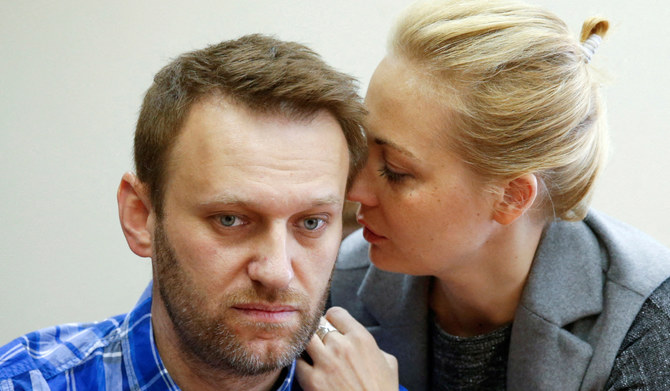
- The Russian prison service said that Navalny collapsed on February 16 after a walk at the isolated camp
WASHINGTON: US intelligence agencies believe that while the Russian president was ultimately responsible for the death of opposition leader Alexei Navalny, he didn’t order it to take place when it did, the Wall Street Journal reported Saturday.
The finding, which the Journal said was based on both classified intelligence and an analysis of public facts, raises new questions about Navalny’s death in a remote Arctic prison camp, which led to a new round of sanctions against President Vladimir Putin’s Russia.
Among those facts was the timing of the opposition leader’s death in mid-February, which overshadowed Putin’s reelection a month later.
While the new finding does not question Putin’s responsibility for Navalny’s death, the CIA and other US intelligence agencies believe he probably didn’t order it “at that moment,” the Journal said, quoting people familiar with the matter.
It said that some European officials, briefed on the US finding, were skeptical that the 47-year-old dissident could have been targeted without Putin’s prior knowledge, given the tight controls in today’s Russia.
President Joe Biden and several other world leaders have publicly expressed little doubt about the matter. “Make no mistake. Putin is responsible for Navalny’s death,” Biden said after the stunning news of the death emerged.
The Russian prison service said that Navalny collapsed on February 16 after a walk at the isolated camp. It said attempts to revive him failed.
Navalny had seemed relatively healthy and in good spirits when seen in a video just a day earlier.
A week before that, he reportedly had been the subject of high-level talks over a potential prisoner swap that could have freed him.
Navalny had been serving a 19-year prison sentence on charges he and his backers insist were fabricated.
He had earlier survived a poisoning that US and other investigators blamed on the Kremlin. Russian officials have denied culpability in the poisoning or in his death.
A number of prominent Kremlin opponents have died, been jailed and or forced into exile in recent years.
Reached by AFP, the National Security Council declined to comment on the report.
Some US officials say in internal memo Israel may be violating international law in Gaza

- The submissions to the memo provide the most extensive picture to date of the divisions inside the State Department over whether Israel might be violating international humanitarian law in Gaza
WASHINGTON: Some senior US officials have advised Secretary of State Antony Blinken that they do not find “credible or reliable” Israel’s assurances that it is using US-supplied weapons in accordance with international humanitarian law, according to an internal State Department memo reviewed by Reuters.
Other officials upheld support for Israel’s representation.
Under a National Security Memorandum (NSM) issued by President Joe Biden in February, Blinken must report to Congress by May 8 whether he finds credible Israel’s assurances that its use of US weapons does not violate US or international law.
By March 24, at least seven State Department bureaus had sent in their contributions to an initial “options memo” to Blinken. Parts of the memo, which has not been previously reported, were classified.
The submissions to the memo provide the most extensive picture to date of the divisions inside the State Department over whether Israel might be violating international humanitarian law in Gaza.
“Some components in the department favored accepting Israel’s assurances, some favored rejecting them and some took no position,” a US official said.
A joint submission from four bureaus — Democracy Human Rights & Labor; Population, Refugees and Migration; Global Criminal Justice and International Organization Affairs – raised “serious concern over non-compliance” with international humanitarian law during Israel’s prosecution of the Gaza war.
The assessment from the four bureaus said Israel’s assurances were “neither credible nor reliable.” It cited eight examples of Israeli military actions that the officials said raise “serious questions” about potential violations of international humanitarian law.
These included repeatedly striking protected sites and civilian infrastructure; “unconscionably high levels of civilian harm to military advantage“; taking little action to investigate violations or to hold to account those responsible for significant civilian harm and “killing humanitarian workers and journalists at an unprecedented rate.”
The assessment from the four bureaus also cited 11 instances of Israeli military actions the officials said “arbitrarily restrict humanitarian aid,” including rejecting entire trucks of aid due to a single “dual-use” item, “artificial” limitations on inspections as well as repeated attacks on humanitarian sites that should not be hit.
Another submission to the memo reviewed by Reuters, from the bureau of Political and Military Affairs, which deals with US military assistance and arms transfers, warned Blinken that suspending US weapons would limit Israel’s ability to meet potential threats outside its airspace and require Washington to re-evaluate “all ongoing and future sales to other countries in the region.”
Any suspension of US arms sales would invite “provocations” by Iran and aligned militias, the bureau said in its submission, illustrating the push-and-pull inside the department as it prepares to report to Congress.
The submission did not directly address Israel’s assurances.
Inputs to the memo from the Office of the Special Envoy to Monitor and Combat Antisemitism and US ambassador to Israel Jack Lew said they assessed Israel’s assurances as credible and reliable, a second US official told Reuters.
The State Department’s legal bureau, known as the Office of the Legal Adviser, “did not take a substantive position” on the credibility of Israel’s assurances, a source familiar with the matter said.
State Department spokesperson Matthew Miller said the agency doesn’t comment on leaked documents.
“On complex issues, the Secretary often hears a diverse range of views from within the Department, and he takes all of those views into consideration,” Miller said.
MAY 8 REPORT TO CONGRESS
When asked about the memo, an Israeli official said: “Israel is fully committed to its commitments and their implementation, among them the assurances given to the US government.”
The White House did not respond to a request for comment.
Biden administration officials repeatedly have said they have not found Israel in violation of international law.
Blinken has seen all of the bureau assessments about Israel’s pledges, the second US official said.
Matthew Miller on March 25 said the department received the pledges. However, the State Department is not expected to render its complete assessment of credibility until the May 8 report to Congress.
Further deliberations between the department’s bureaus are underway ahead of the report’s deadline, the US official said.
USAID also provided input to the memo. “The killing of nearly 32,000 people, of which the GOI (Government of Israel) itself assesses roughly two-thirds are civilian, may well amount to a violation of the international humanitarian law requirement,” USAID officials wrote in the submission.
USAID does not comment on leaked documents, a USAID spokesperson said.
The warnings about Israel’s possible breaches of international humanitarian law made by some senior State Department officials come as Israel is vowing to launch a military offensive into Rafah, the southern-most pocket of the Gaza Strip that is home to over a million people displaced by the war, despite repeated warnings from Washington not to do so.
Israel’s military conduct has come under increasing scrutiny as its forces have killed 34,000 Palestinians in Gaza, according to the enclave’s health authorities, most of them women and children.
Israel’s assault was launched in response to the Hamas attack on Israel on Oct. 7, in which Israel says 1,200 people were killed and 250 others taken hostage.
The National Security Memorandum was issued in early February after Democratic lawmakers began questioning whether Israel was abiding by international law.
The memorandum imposed no new legal requirements but asked the State Department to demand written assurances from countries receiving US-funded weapons that they are not violating international humanitarian law or blocking US humanitarian assistance.
It also required the administration to submit an annual report to Congress to assess whether countries are adhering to international law and not impeding the flow of humanitarian aid.
If Israel’s assurances are called into question, Biden would have the option to “remediate” the situation through actions ranging from seeking fresh assurances to suspending further US weapons transfers, according to the memorandum.
Biden can suspend or put conditions on US weapons transfers at any time.
He has so far resisted calls from rights groups, left-leaning Democrats and Arab American groups to do so.
But earlier this month he threatened for the first time to put conditions on the transfer of US weapons to Israel, if it does not take concrete steps to improve the dire humanitarian situation in Gaza.




